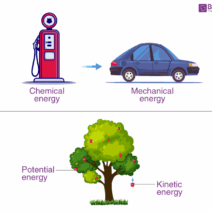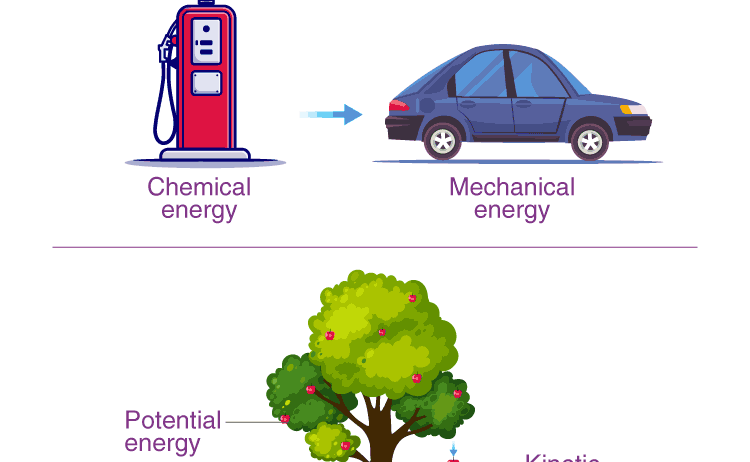Transformers are ubiquitous components in electrical engineering, commonly associated with the transmission and distribution of electrical energy. Yet, many people ponder whether these mechanical devices adhere to the fundamental principles of physics, particularly the Law of Conservation of Energy. This law posits that energy cannot be created or destroyed; it can only change forms. This inquiry regarding transformers leads us into intriguing discussions about the nature of energy and its manipulation.
The function of a transformer is quite elegant in its simplicity. It transfers electrical energy between two or more circuits through electromagnetic induction. By stepping up or stepping down voltage levels, transformers enable efficient long-distance power transmission. But how does this relate to the Law of Conservation of Energy?
To comprehend this relationship, one must first grasp the operation principle of a transformer. At its core are two coils of wire: the primary coil and the secondary coil, wrapped around a ferromagnetic core. When alternating current flows through the primary coil, it generates a magnetic field that permeates the core and generates an induced voltage in the secondary coil. Importantly, this process is not without losses, primarily due to resistance in the wires and electromagnetic fluctuations. Thus, while energy is indeed transformed, it is not without some degradation in usability.
One might wonder how energy transformation occurs. The Law of Conservation of Energy does apply; however, it allows energy to change forms. For instance, electrical energy entering the primary coil transforms into magnetic energy, which subsequently converts back into electrical energy in the secondary coil. However, practical scenarios illustrate that this conversion is never perfectly efficient. Typically, energy losses range between 2-5%, implying that while energy is conserved, its quality diminishes during transmission.
To deepen our understanding, let’s delve into the efficiency of transformers. Efficiency is the ratio of the output power to the input power, a critical metric in evaluating performance. High-efficiency transformers can reach around 99%, which means they come very close to adhering to the Law of Conservation of Energy, with minimal losses. Nevertheless, inefficiencies arise from heat generation due to resistance, core losses due to hysteresis and eddy currents, and stray losses. Each factor highlights the necessity of considering energy losses in real-world applications.
One fascinating aspect of transformers lies within their design and materials. Advances in technology have led to the creation of high-efficiency transformer designs utilizing superior core materials and innovative winding techniques. Such improvements not only minimize energy loss but also maximize the amount of energy that conforms to the Law of Conservation of Energy. These designs pave the way for more sustainable energy management in power systems.
Notably, the ecological implications of transformer efficiency bear significant weight. Since transformers are pivotal in the global energy supply chain, enhancing their performance directly correlates to reducing carbon footprints associated with energy generations. With the pressing challenges posed by climate change, every increment in efficiency contributes to a broader vision of energy sustainability.
The deployment of renewable energy sources further complicates the dynamics surrounding transformers. As wind and solar energy become more prevalent, the need for grid compatibility grows. Transformers play a crucial role in integrating these intermittent energy sources into traditional grids. Here, transformers must adapt to varying input qualities while ensuring that the Law of Conservation of Energy remains upheld. These devices are essential in buffering fluctuations and stabilizing supply.
Digging deeper into a global perspective, one may find the concept of smart transformers emerging as critical players in modern energy management. Smart transformers utilize advanced technologies, such as IoT (Internet of Things) and AI (Artificial Intelligence), to optimize their operations. By monitoring real-time data, these transformers not only improve efficiency but also predict demand patterns, thereby minimizing energy losses. As technology evolves, the convergence of efficiency and energy conservation principles becomes increasingly crucial in addressing climate concerns.
To sum up, the relationship between transformers and the Law of Conservation of Energy is an intricate tapestry woven with threads of physics, technology, and environmental consciousness. Transformers indeed obey this fundamental law by facilitating the transformation of energy forms while acknowledging that imperfections exist within this system. The reflections on transformer efficiency are not merely trivial; they echo broader implications for global energy use and climate change initiatives.
The journey toward maximizing transformer efficiency paints a picture of the future—a future where energy conservation becomes a cornerstone of innovative engineering practices. The optimal implementation of transformers could serve as a paradigm shift in how society utilizes energy resources. Furthermore, this balance between technological advancement and ecological responsibility is crucial for sustainable development in the face of climate change. Adhering to the Law of Conservation of Energy while improving the efficiency of transformers may just be a step toward a greener, more sustainable world.






